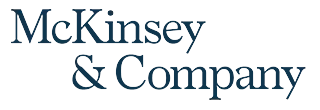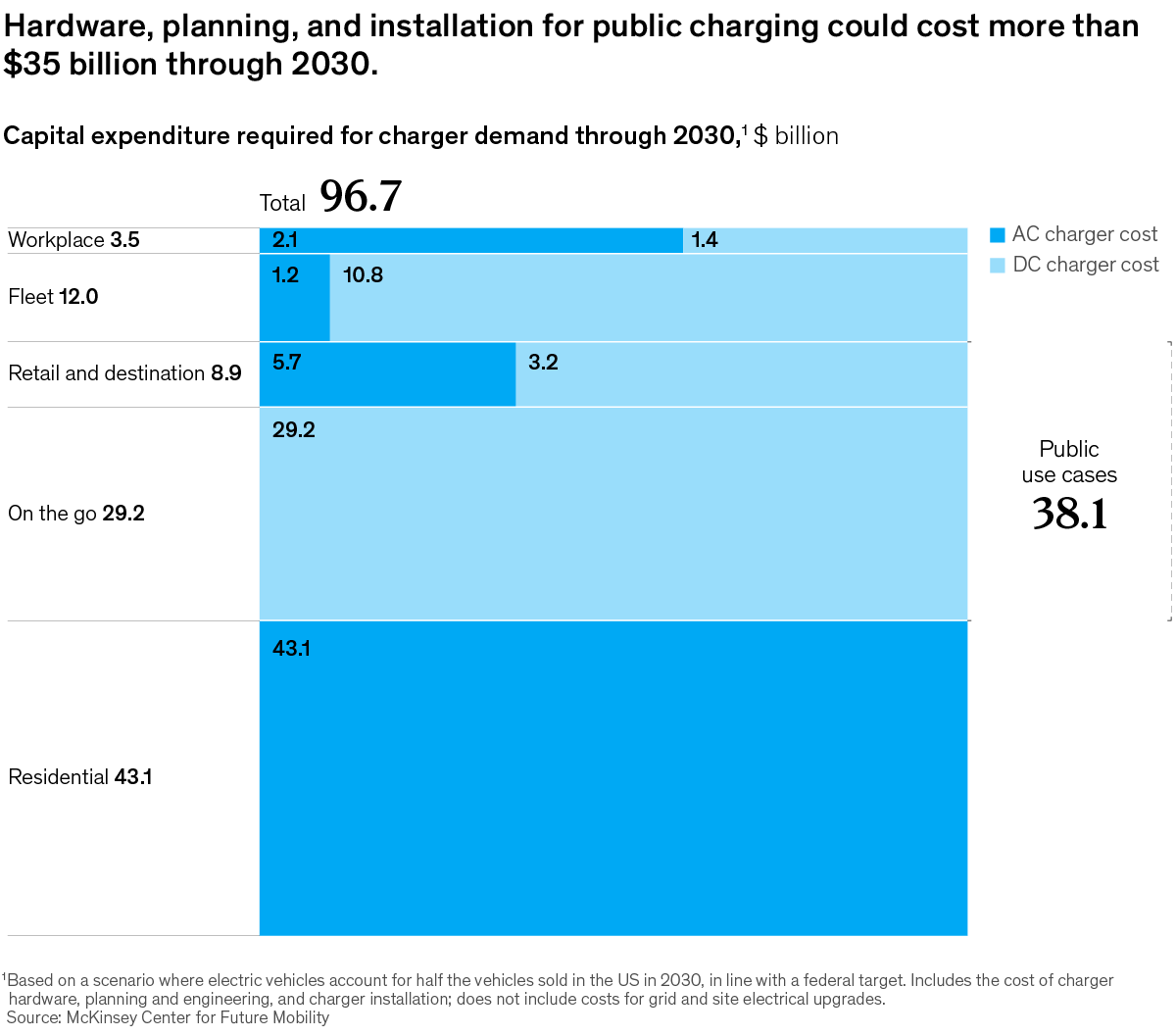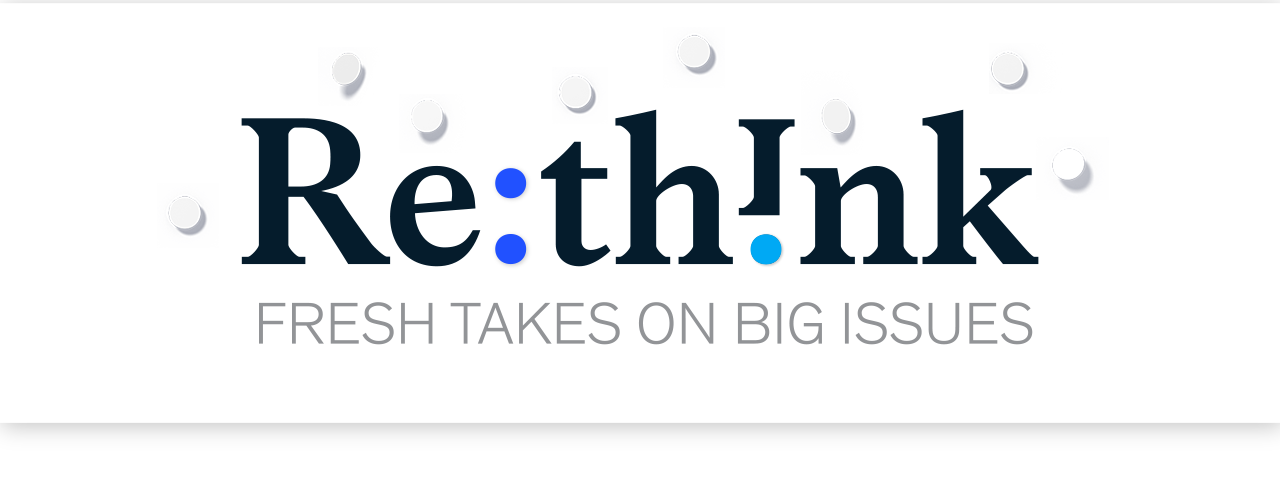Archives
- By thread 5286
-
By date
- June 2021 10
- July 2021 6
- August 2021 20
- September 2021 21
- October 2021 48
- November 2021 40
- December 2021 23
- January 2022 46
- February 2022 80
- March 2022 109
- April 2022 100
- May 2022 97
- June 2022 105
- July 2022 82
- August 2022 95
- September 2022 103
- October 2022 117
- November 2022 115
- December 2022 102
- January 2023 88
- February 2023 90
- March 2023 116
- April 2023 97
- May 2023 159
- June 2023 145
- July 2023 120
- August 2023 90
- September 2023 102
- October 2023 106
- November 2023 100
- December 2023 74
- January 2024 75
- February 2024 75
- March 2024 78
- April 2024 74
- May 2024 108
- June 2024 98
- July 2024 116
- August 2024 134
- September 2024 130
- October 2024 141
- November 2024 171
- December 2024 115
- January 2025 216
- February 2025 140
- March 2025 220
- April 2025 233
- May 2025 239
- June 2025 303
- July 2025 98
-
What exactly is the metaverse? Leading brands are rewriting the rules of marketing.
McKinsey&Company
Why the metaverse is here to stay .

Marketing in the metaverse In the news • Fashion forward. When it comes to innovating in the metaverse, luxury brands are known for bold experimentation. But creativity is flourishing on the other end of the retail scale too. Teen brands are reaping rewards on platforms where they sell virtual accessories, such as digital black beanies, to young consumers who are increasingly spending more time in the metaverse. One recent campaign encouraged people to twin with their avatars by dressing identically in real life and posting pictures online, leading to ten times more social-media engagement than usual. [Vogue Business] • Get your groove on. What do you do if you work with one of the hottest bands the world has ever known and a global pandemic shuts down live performances? If you’re the company behind one K-pop megaband, you go virtual. The South Korean entertainment company lost 98% of its sales from its live-concert business in 2020 when tours were canceled, but it quickly pivoted to virtual-reality concerts. With digital performances costing much less than live shows to produce, its total 2020 revenues and operating profit still increased by more than 33%. [FT] 
Now is the right time to adopt a test-and-learn mindset, to be open to experiments in the metaverse, and to move on quickly from failure and capitalize on success. 
On McKinsey.com • Meta-what? No one can seem to agree on a single definition of what exactly the metaverse is. But there is consensus about its characteristics: immersive and real-time environments that span both virtual and physical worlds, encompass multiple platforms, are powered by a virtual economy, and enable virtual identities. The metaverse is an evolution beyond today’s internet—and it provides marketers with innovative ways to reach consumers. • Nothing ventured, nothing gained. Although the metaverse is still nascent, there are already lessons to be learned from brands who have journeyed forth early on to see what works and what doesn’t. Companies should define their marketing goals, figure out which metaverse platforms are the best fit for their brands, partner smartly, appeal to their target audiences, and rethink how they define success. Most of all, they shouldn’t be afraid to experiment. See six reasons why the metaverse is here to stay. — Edited by Christine Y. Chen Understand the metaverse 
Was this forwarded to you? Sign up here. Or send us feedback — we’d love to hear from you. 

Follow our thinking 


This email contains information about McKinsey’s research, insights, services, or events. By opening our emails or clicking on links, you agree to our use of cookies and web tracking technology. For more information on how we use and protect your information, please review our privacy policy. You received this email because you subscribed to the On Point newsletter. Manage subscriptions | Unsubscribe Copyright © 2022 | McKinsey & Company, 3 World Trade Center, 175 Greenwich Street, New York, NY 10007
by "McKinsey On Point" <publishing@email.mckinsey.com> - 12:25 - 27 Jun 2022 -
Are you using your organisation’s creative tools to their fullest potential?
Watch the final webinar in our on-demand seriesRead online 

Extraordinary creativity for everyone in your team. Are you using your creative tools to their fullest potential? With Adobe Creative Cloud, you don’t have to be a technical wizard to harness powerful creativity.
In the final session of our three-part on-demand webinar series – New Ways to Create – explore how you can be getting the most out of your existing applications to empower and align everyone in your team as they reskill, upskill and engage in online learning.
Explore Adobe Creative Cloud Pro Edition Get the world’s best creative apps and services, plus unlimited downloads of Adobe Stock standard assets. Now available for teams and enterprises. 

Speak with one of our experts today to understand how Adobe Creative Cloud can help you grow your business with the world’s best creative apps and services. 

Adobe and the Adobe logo are either registered trademarks or trademarks of Adobe in the United States and/or other countries. All other trademarks are the property of their respective owners.
Spread the word 


© 2022 Adobe Inc. All rights reserved.
This is a marketing email from Adobe, 345 Park Avenue, San Jose, CA 95110 USA.
Click here to unsubscribe.
Your privacy is important to us. Please review Adobe’s Privacy Policy.
by "Adobe" <demand@info.adobe.com> - 11:30 - 26 Jun 2022 -
[Live Demo] - The future of Software Development Optimisation
Sumo Logic
Last chance to register!
 Join Sumo Logic two 30-minute sessions on Application Observability and Software Development Optimization with live Q&A. Register now and get the recording after the session.
Join Sumo Logic two 30-minute sessions on Application Observability and Software Development Optimization with live Q&A. Register now and get the recording after the session.
Application Observability, June 28th at 12pm AEST Demand for faster innovation and efficiency is driving organisations to accelerate application modernisation creating additional challenges on how to manage their reliability. Sumo Logic’s observability solution gives site reliability engineers operational visibility across the entire stack, with entity-driven correlations and actionable insights from your applications to your infrastructure. Register Software Development Optimization, June 29th at 12pm AEST Boost your software development lifecycle with Sumo Logic’s solution created to help teams build better software faster. The Software Development Optimization solution is designed to collect and correlate data across the entire software development process and DevOps toolchain to help teams continuously improve how they deliver software. Register We look forward to you joining us for a live demo with the experts. Please let us know if you have any questions ahead of time.
Sumo Logic
I'm not interested in this series.
Sumo Logic, Level 9, 64 York Street, Sydney, NSW 2000
© 2022 Sumo Logic, All rights reserved.Unsubscribe 


by "Sumo Logic" <marketing-info@sumologic.com> - 07:01 - 26 Jun 2022 -
The week in charts
the Daily read
War in Ukraine and the net-zero transition, resilient organizations, and more .
Share this email 



ALL THE WEEK’S DATA THAT'S FIT TO VISUALIZE 
Our Charting the path to the next normal series offers a daily chart that helps explain a changing world—as we strive for sustainable, inclusive growth. In case you missed them, this week’s graphics explored the effects of the war in Ukraine on global trade and the net-zero transition, resilient organizations, the industrial revolution in services, the well-being of frontline workers, and what it’ll take for electric vehicles to go mainstream. FEATURED CHART War and the net-zero transition 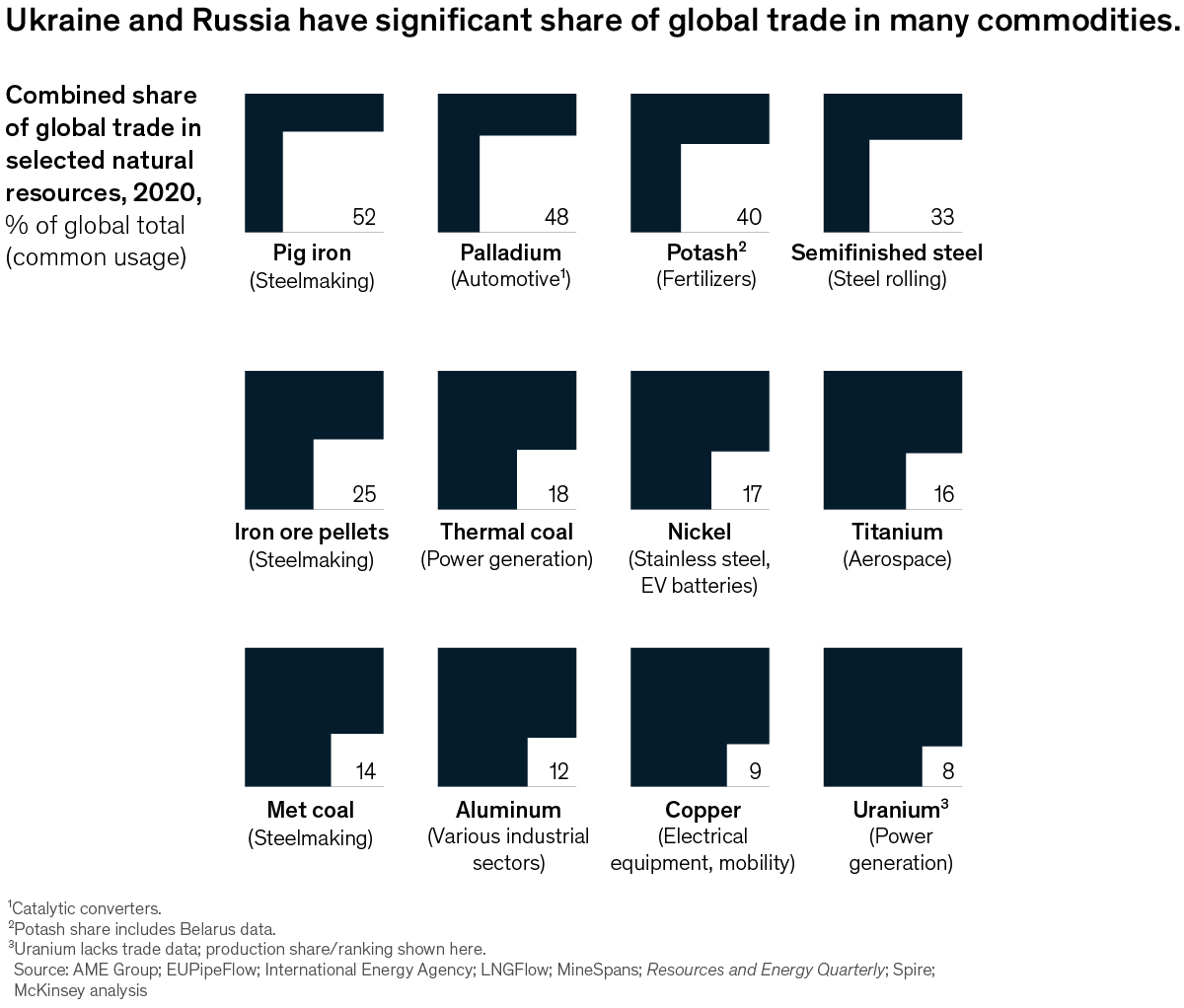
See more 



This week’s other select charts Dealing with disruption The revolution is digital Supporting the well-being of frontline workers Charging for charges 

Follow our thinking 



Share these insights Did you enjoy this newsletter? Forward it to colleagues and friends so they can subscribe too.
Was this issue forwarded to you? Sign up for it and sample our 40+ other free email subscriptions here.This email contains information about McKinsey’s research, insights, services, or events. By opening our emails or clicking on links, you agree to our use of cookies and web tracking technology. For more information on how we use and protect your information, please review our privacy policy. You received this email because you subscribed to The Week in Charts newsletter. Manage subscriptions | Unsubscribe Copyright © 2022 | McKinsey & Company, 3 World Trade Center, 175 Greenwich Street, New York, NY 10007
by "McKinsey Week in Charts" <publishing@email.mckinsey.com> - 03:52 - 25 Jun 2022 -
What are you reading this summer?
Readers & Leaders
Plus, this month’s business bestsellers THIS MONTH'S PAGE-TURNERS ON BUSINESS AND BEYOND
When ticket prices foil your summer getaway plans, where do you turn to escape? If it’s toward a good book, we want to know which one. Email us at newideas@mckinsey.com to let us know what’s on your bookshelf, and we’ll let you know what’s on ours (stay tuned for our annual summer reading list, coming soon). Need some inspiration for your new favorite read? Catch up on this month’s Author Talks, which covers business strategies for the digital age, achieving financial independence by 40, and much more. Don’t miss an interview with Robert Samuels and Toluse Olorunnipa, authors of the long-awaited biography, His Name Is George Floyd, plus this month’s bestselling business books, prepared exclusively for McKinsey by NPD BookScan. Itching for more good reads? Check out McKinsey on Books for the latest, and to get Readers & Leaders in your inbox monthly, click here to subscribe.
AUTHOR TALKS
George Floyd was unique in his spirit, but not in his condition, say Robert Samuels and Toluse Olorunnipa, co-authors of His Name Is George Floyd: One Man’s Life and the Struggle for Racial Justice (Viking, May 2022). In a recent edition of Author Talks, the Washington Post journalists break down how the societal structures that oppressed Floyd continue to impact Black men and women in America—from public education and healthcare to the criminal justice system and beyond.
“George Floyd was suffocating for decades in America as a result of various institutions that we all play a role in upholding, we all play a role in defending, and we all play a role in constructing. … It is incumbent upon policy makers—and all of us, as Americans—to think about how we improve those systems and make sure that people who are like George Floyd aren’t left behind the way he was by a number of systems.” —Toluse Olorunnipa. Watch the full interview.IT BEARS REPEATING
—Julien Saunders, co-author with Kiersten Saunders of Cashing Out: Win the Wealth Game by Walking Away, in a recent edition of Author Talks.
IN CASE YOU MISSED IT
Roger Martin explores fresh frameworks for business management: “I think it’s a myth that you can design a strategy that will for sure work in the future. … It unfolds as it will. So all strategy can do is improve your odds or shorten your odds.” Watch the full interview.
Tsedal Neeley says not to fear a robot takeover: “For far too long we’ve worried: Will machines replace us? Is automation going to be the end of many of our careers? But the reality we’re seeing years into this digital ecosystem, or digital context, is that people who have a digital mindset will be the ones who will be leading the way, compared to people without a digital mindset.” Watch the full interview.
Dr. Jenny Wang shines a light on America’s ‘invisible race’: “As Asian Americans … it’s been said that we are people who, due to our proximity to Whiteness, have kind of bought into this idea that our race didn’t matter, that if we just worked hard enough and if our competency was sufficient, then we wouldn’t be judged by our race. Over the course of the pandemic, we realized that was not true.” Watch the full interview.Kathryn Finney explains how she succeeded in entrepreneurship without compromising her values: “Having been in the start-up community for a while, there’s this belief that you have to be a jerk or you have to be a certain type of person to be successful in this space. I don’t believe that at all. I think you can be brilliant at your work, but you can be a good person, too.” Watch the full interview.
Daniel Coyle distills cooperation tactics from the world’s top teams into actionable insights for company culture: “A Navy SEAL commander named Dave Cooper told me the four most important words any leader can say are, ‘I screwed that up,’ which is really, really powerful, because it gives people permission to tell the truth.” Watch the full interview.
Marcus Buckingham argues that love and work can—and should—go hand in hand: “When you’re in love with another human, it makes you feel safe, it makes you feel inquisitive, and it makes you feel uplifted. It’s the same cocktail when you’re doing something that you love.” Watch the full interview.BUSINESS BESTSELLERS TOP
8
Water, SPF, and a good book. Hit the beach with the top business bestsellers in eight categories, prepared exclusively for McKinsey by NPD BookScan. Explore the full lists on McKinsey on Books.
BUSINESS OVERALL
Atomic Habits: An Easy & Proven Way To Build Good Habits & Break Bad Ones by James Clear (Avery Publishing Group)
BUSINESS HARDCOVER
Atomic Habits: An Easy & Proven Way To Build Good Habits & Break Bad Ones by James Clear (Avery Publishing Group)
DECISION MAKING
Blink: The Power of Thinking Without Thinking by Malcolm Gladwell (Hachette Book Group)
ECONOMICS
Basic Economics: A Common Sense Guide to the Economy by Thomas Sowell (Hachette Book Group)
ORGANIZATIONAL BEHAVIOR
Atomic Habits: An Easy & Proven Way To Build Good Habits & Break Bad Ones by James Clear (Penguin Group USA)
WORKPLACE CULTURE
Who Moved My Cheese?: An Amazing Way to Deal with Change in Your Work and in Your Life by Spencer Johnson (Penguin Group USA)
DIVERSITY & INCLUSION
Caste (Oprah’s Book Club): The Origins of Our Discontents by Isabel Wilkerson (Random House)
SUSTAINABILITY
Net Positive: How Courageous Companies Thrive by Giving More Than They Take by Paul Polman and Andrew Winston (Harvard Business Review Press)
BOOKMARK THIS

The graduate’s guide to the world of work
A collection of recent insights and interviews to help you hit the ground running at your new job or internship during a period of continuing—and profound—change..
The McKinsey Download Hub
Download McKinsey’s signature reports and special collections on the management issues that matter, from leading through the COVID-19 crisis to managing risk and digitizing operations.
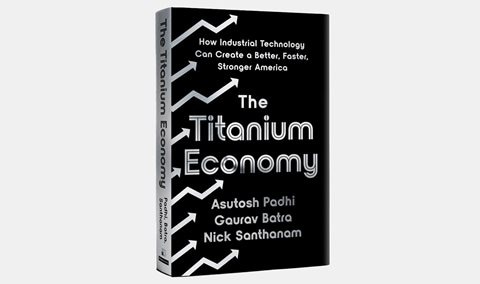
The Titanium Economy
McKinsey’s forthcoming #TitaniumEconomyBook explores industrial tech and reveals this underappreciated and undervalued sector for what it really is: a reliable source of high-paying domestic jobs and soaring stock prices.
If you’d like to propose a book or author for #McKAuthorTalks, please email us at Author_Talks@Mckinsey.com. Due to the high volume of requests, we will respond only to those being considered.
—Edited by Molly Liebergall, a digial editor in McKinsey’s New York office
Share these insights
Did you enjoy this newsletter? Forward it to colleagues and friends so they can subscribe too.
Was this issue forwarded to you? Sign up for it and sample our 40+ other free email subscriptions here.
This email contains information about McKinsey's research, insights, services, or events. By opening our emails or clicking on links, you agree to our use of cookies and web tracking technology. For more information on how we use and protect your information, please review our privacy policy.
You received this email because you subscribed to the Readers & Leaders newsletter.
Copyright © 2022 | McKinsey & Company, 3 World Trade Center, 175 Greenwich Street, New York, NY 10007
by "McKinsey Readers & Leaders" <publishing@email.mckinsey.com> - 11:10 - 25 Jun 2022 -
Valuing the metaverse, Marc Andreessen interview, and more: The Daily Read weekender
Harmony Internal - McKinsey
Highlights as you ease into the weekend CURATED PICKS FOR YOUR DOWNTIME, FROM OUR EDITORS

Torea Frey
Managing Editor, SeattleSummer is here—at least if you’re in the Northern Hemisphere. As we slide into the weekend, lean back with some of this week’s big reads on tech, remote work, and more:
Quote of the day
—Manage risk and get informed about disclosure criteria and transparency in “Cybersecurity legislation: Preparing for increased reporting and transparency”
Chart of the day
ready to unwind?

Need tips on how to unleash your team’s full potential?
In a new interview from McKinsey’s Author Talks series, bestselling author Daniel Coyle defines the essential elements that create the foundation for optimal company culture.

Podcast time: How current global trends are disrupting the fashion industry
The latest episode of The McKinsey Podcast looks at what fashion suppliers and brands are doing to adapt and thrive amid economic and geopolitical challenges.

15-Across: It can be dramatic or tragic
Know the answer? Test yourself with the latest McKinsey Crossword, Solstice | No. 81.
Share these insights
Did you enjoy this newsletter? Forward it to colleagues and friends so they can subscribe too. Was this issue forwarded to you? Sign up for it and sample our 40+ other free email subscriptions here.
This email contains information about McKinsey’s research, insights, services, or events. By opening our emails or clicking on links, you agree to our use of cookies and web tracking technology. For more information on how we use and protect your information, please review our privacy policy. You received this email because you subscribed to the Daily Read newsletter. Manage subscriptions | Unsubscribe Copyright © 2022 | McKinsey & Company, 3 World Trade Center, 175 Greenwich Street, New York, NY 10007
by "McKinsey Daily Read" <publishing@email.mckinsey.com> - 05:05 - 24 Jun 2022 -
Meet Uffizio At Seguridad Expo In Mexico At Stand No: 1248
Meet Uffizio At Seguridad Expo In Mexico At Stand No: 1248

 It's official. We’re flying over international waters to be a part of Latin America's most awaited Security Expo! We are happy to announce that Uffizio will be exhibiting at Expo Seguridad Mexico this month, from 28th -30th June.
It's official. We’re flying over international waters to be a part of Latin America's most awaited Security Expo! We are happy to announce that Uffizio will be exhibiting at Expo Seguridad Mexico this month, from 28th -30th June.
We’ll be talking about our advanced fleet management system, Trakzee. We will also demonstrate how it can help businesses increase profits and reveal some of our most exclusive features.
Our fleet management products have the reputation of maintaining international standards. Today, Trakzee is deployed in over 65+ countries and now it's time for Mexico! Visit us at Booth - 1248 and get a chance to see our platform live and in action!Schedule a meeting now! 




Want to change how you receive these emails?
You can update your preferences or unsubscribe from this list.
by "Uffizio Technologies Pvt Ltd" <official@uffizio.in> - 04:11 - 24 Jun 2022 -
US states can close the digital divide. A lot of new funding can help.
The Shortlist
Plus, Richard Rumelt on strategy vs wishful thinking .
Share this email 



Our best ideas, quick and curated | June 24, 2022 View in browser 
Out of many, one . . . digital nation? The United States has allocated massive funding to fix the digital divide. This week, we look at how that might happen. Plus, how to build a global tech unicorn, and what has changed—and what hasn’t—in the 20 years since the launch of McKinsey on Finance. 
Logging on. Twenty-four million Americans lack access to high-speed internet, and the service is beyond the reach of many more because it is too expensive or because they lack digital literacy. US policy makers have long talked about the need to close the nation’s digital divide—and now they have made a concrete move to do so. Funding in. Congress has appropriated more than $100 billion to help states bring high-speed-internet access to every American household, as part of the Bipartisan Infrastructure Law and the American Rescue Plan Act. This funding is one of the largest public investments in connectivity since the creation of the Interstate Highway System in 1956. Success could spur innovation and create jobs, but whether states have the administrative and planning capacity to take full advantage of the opportunity is unclear. Who’s in charge? Many states don’t have a dedicated broadband team. And if they do, it is often tucked inside another agency or staffed by a third party. Yet states are expected to administer federal broadband funds on tight timetables, across multiple agencies and levels of government, and with deep involvement from private-sector internet service providers. First steps. To get off on the right foot when developing their broadband programs, states can take several steps. First and foremost, they can create a well-staffed broadband program office whose first task is to assess the current state of connectivity. The office should outline its strategic goals, including how to prioritize deployment, equity, and affordability and how it will translate those objectives into specific plans for each federal program. Engaging key stakeholders, including public and private entities, nonprofits, and communities, could create valuable buy-in and build support. Impact officers. As states develop and launch requests for proposals and programs, they may want to consider how they will monitor progress once those grants are awarded. For example, they could institute tracking and reporting requirements to ensure that goals are being met, while avoiding waste, fraud, and abuse of taxpayer funds. Some states have appointed infrastructure coordinators to help direct funding to set priorities and allocate resources effectively. If states don’t adequately dedicate resources to their broadband program efforts, they could fail to secure all the funding they deserve or make the most of the money they receive. The stakes are high: with more than $100 billion in federal funding allocated, states could realize the goal of near-universal broadband access and launch the United States on a more innovative, equitable, and prosperous path. 
OFF THE CHARTS Celestial ambitions Space tourism is just the start. Future forays into space could expand from a “space for Earth” economy to a “space for space” economy. Private space funding has shifted to satellite-related and other ventures in the low-Earth orbit. The next shift may be “lunar and beyond” initiatives, with applications in propulsion, mining, and robotics. Who is funding these celestial ambitions? Over the past five years, commercial R&D spending within the space sector has risen by 22 percent annually, while the share of US government funding has declined rapidly since 2010. 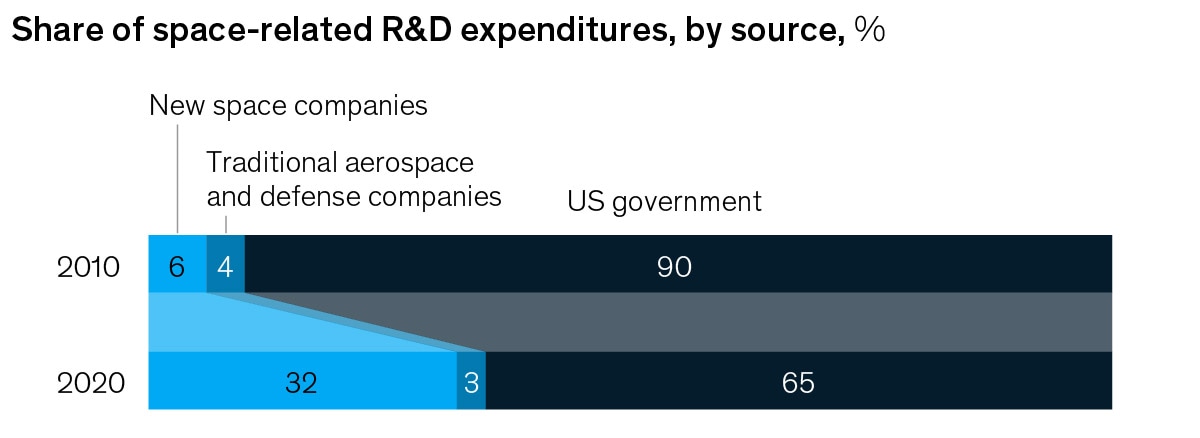
Check out our chart of the day here. 

INTERVIEW Building a global tech unicorn India boasts the third-largest start-up ecosystem in the world after the United States and China, with an estimated 60,000 start-ups, including 90 unicorns, in 2021. Freshworks, a software-as-a-service (SaaS) company that got its start in India and is now headquartered in San Mateo, California, has become the poster child for this thriving ecosystem. Its Nasdaq IPO—which reached a $10 billion valuation—made it the first India-born SaaS firm to trade on a US exchange. In a recent interview, Girish Mathrubootham, Freshworks’ CEO and cofounder, talks about the company’s journey and why he thinks this is the decade for India as a product nation. He also discusses what Indian and Western start-ups can learn from each other. 
MORE ON MCKINSEY.COM Human capital at work: The value of experience | Skills acquired or used through work experience contribute a huge portion of people’s total wealth through their lifetimes. Yet not all companies are good at developing their people. Here’s how that can change. Getting strategy wrong—and how to do it right instead | Richard P. Rumelt, professor emeritus at UCLA Anderson School of Management, says that strategies are often a toxic mix of wishful thinking and incoherent policies. He believes that companies should understand the nature of a challenge before setting goals to correct it. The green business-building opportunity | Surging demand for zero-carbon technologies, materials, and services gives companies opportunities to build new green businesses. Leaders that move quickly could see exponential growth. 

WHAT WE’RE DOING 20 years of McKinsey on Finance McKinsey on Finance’s first issue came out in summer 2001, when companies were still reeling from the dot-com crash—and only a few weeks before the world-shattering events of 9/11. In the decades since, readers have witnessed wars, financial crises, a global pandemic, a substantial decline in trust for some major institutions, and a heightened urgency about existential climate change. They have seen technological advances on an almost incomprehensible scale, millions of people lifted out of poverty, the dramatic rise of Asia, and stunning medical breakthroughs. What will the next 20 years bring? We don’t have a crystal ball. But we do have a compass: long-term value creation. We’ve studied, been challenged about, sharpened our thinking on, and ultimately reinforced our appreciation of core economic and financial principles, particularly as they apply through very uncertain times. It would be simplistic to say that enormous challenges lie before us, even when those challenges include developing innovation from within, comprehending new ideas, and navigating businesses through existential climate change. It is more correct to recognize that those challenges are already here. In this article, we look back at the past two decades and look forward to three challenges ahead. — Edited by Barbara Tierney Share this What We’re Doing 



BACKTALK Have feedback or other ideas? We’d love to hear from you. 
Tell us what you think 

Follow our thinking 



Share these insights Did you enjoy this newsletter? Forward it to colleagues and friends so they can subscribe too.
Was this issue forwarded to you? Sign up for it and sample our 40+ other free email subscriptions here.This email contains information about McKinsey’s research, insights, services, or events. By opening our emails or clicking on links, you agree to our use of cookies and web tracking technology. For more information on how we use and protect your information, please review our privacy policy. You received this email because you subscribed to The Shortlist newsletter. Manage subscriptions | Unsubscribe Copyright © 2022 | McKinsey & Company, 3 World Trade Center, 175 Greenwich Street, New York, NY 10007
by "McKinsey Shortlist" <publishing@email.mckinsey.com> - 01:51 - 24 Jun 2022 -
Sales of electric vehicles have surged, but what will it take for EVs to go mainstream?
McKinsey&Company
Three key issues for auto leaders .

The road ahead for EVs In the news • Fast, but not fast enough. Mobility accounts for around one-fifth of global carbon emissions—which means that ramping up electric-vehicle (EV) sales is critical in meeting net-zero targets. In 2021, global electric-car sales more than doubled, which translates to around one in 12 new cars sold. However, the electrification of transport isn’t happening fast enough. Roughly 16 million EVs are on the road today—just a fraction of the world’s 1.2 billion cars. To stay on track for global net-zero emissions by 2050, the world will need 250 million EVs on the road by 2030. [Economist] • Powering through. Despite supply chain issues and COVID-19-related disruptions, EV sales in China have generally stayed strong. At least four EV makers in China sold more than 10,000 vehicles in May 2022. One Chinese EV company sold more than 114,000 EVs, an increase of 8% from the previous month and 360% from the prior year. Additionally, more EVs that are made in China are now being exported to Europe. Europe’s EV market is attractive in part because of its existing charging network and EV-purchasing subsidies, analysts say. [Bloomberg] 
In China, the number of public charging stations would have to increase to around five million by 2030, when more than 100 million passenger EVs will be on the roads. 
On McKinsey.com • A rapid shift. The automotive industry is gearing up for a shift to electric. Since 2010, investors have spent $280 billion on auto hardware and software, with almost half of this investment going to EVs. Worldwide demand for EVs could grow sixfold from 2021 to 2030, with annual unit sales increasing to roughly 40 million, from 6.5 million, according to McKinsey research. However, the auto industry and related players must address three key issues, including better access to raw materials, before EV production and sales can scale accordingly. • A gigaeconomy. Building more gigafactories, the large facilities where most EV batteries are produced, is one way for the auto industry to scale more quickly. If worldwide EV demand grows as projected, the auto industry would need 200 new gigafactories—in addition to the 130 that already exist—by 2030. Accelerating the rollout of charging infrastructure would also help EVs go mainstream: by 2030, the US could need around 1.2 million public chargers to keep up with demand. A McKinsey Quarterly article describes how the auto industry could evolve. — Edited by Andrew Simon Charge ahead 
Was this forwarded to you? Sign up here. Or send us feedback — we’d love to hear from you. 

Follow our thinking 


This email contains information about McKinsey’s research, insights, services, or events. By opening our emails or clicking on links, you agree to our use of cookies and web tracking technology. For more information on how we use and protect your information, please review our privacy policy. You received this email because you subscribed to the On Point newsletter. Manage subscriptions | Unsubscribe Copyright © 2022 | McKinsey & Company, 3 World Trade Center, 175 Greenwich Street, New York, NY 10007
by "McKinsey On Point" <publishing@email.mckinsey.com> - 12:52 - 24 Jun 2022 -
Why flexible work options matter: Six key points for employers
the Daily read
Dive into the data .
Share this email 



AN ARTICLE A DAY, PICKED BY OUR EDITORS 
Fifty-eight percent of American employees—the equivalent of 92 million people—have had the option to work remotely at least one day per week, according to McKinsey’s 2022 American Opportunity Survey. And when given the option for flexible work arrangements, nearly 90 percent of workers embrace the opportunity. Indeed, remote work has changed not only how we work, but also what we look for in a job. So what do remote trends mean for the future of work? A new survey explores how flexible work fits into the lives of Americans across genders, sectors, and generations. Don’t miss out on the six key points employers need to know to keep pace with these changes. — Emily Adeyanju, digital editor, Charlotte 
Americans are embracing flexible work—and they want more of it The American Opportunity Survey illuminates how many people are offered the option to work from home, who works flexibly, and how they feel about it. Dive into the data 

Quote of the Day —Julien Saunders, creator of rich & REGULAR, a multimedia blog about financial independence, on giving income a purpose in a recent Author Talks interview 
Chart of the Day 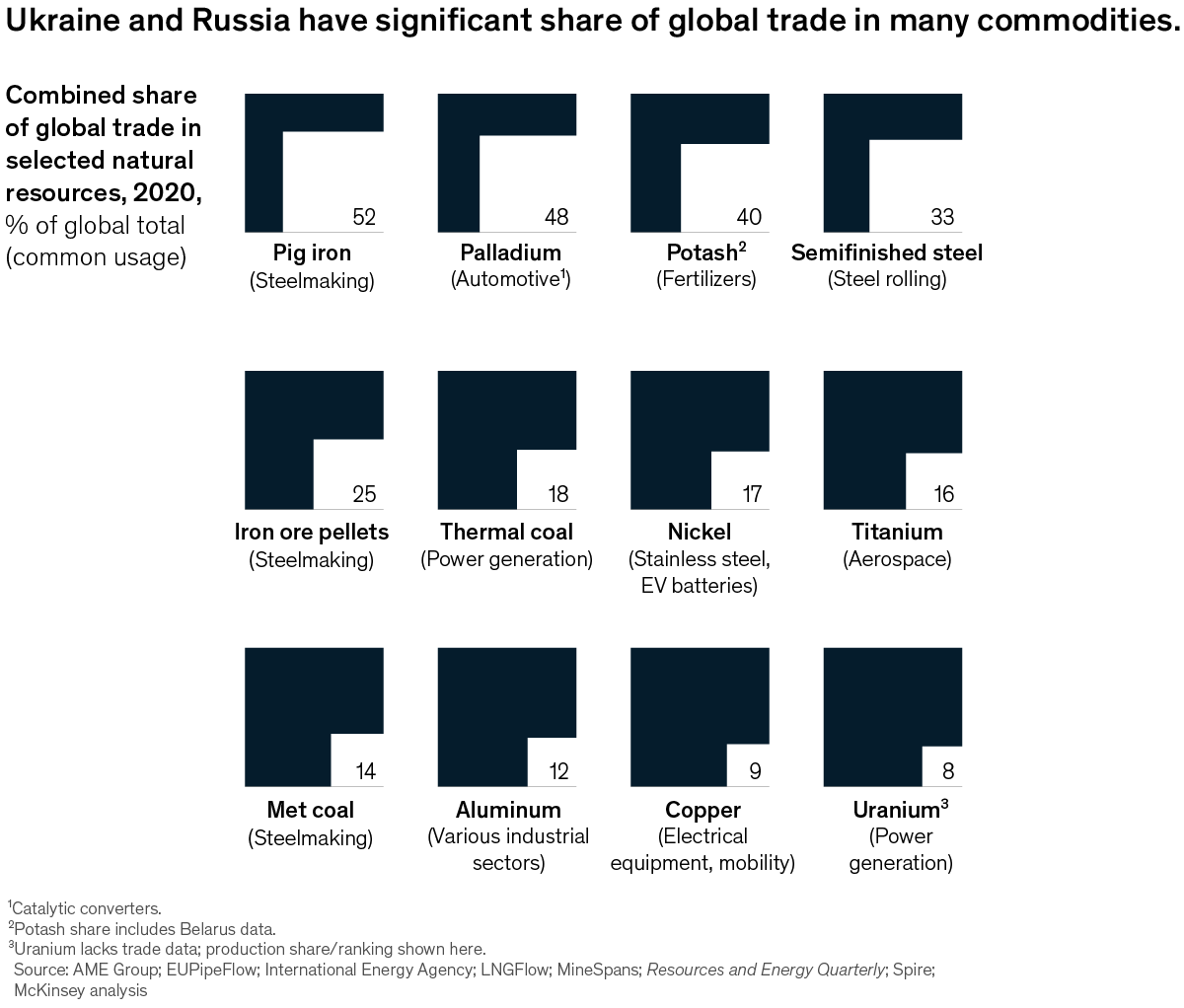
See today’s chart 
Also New 

Giving developers a leading role in cybersecurity Cyber-attacks are happening at such a breakneck pace that protecting against them increasingly starts when developers are first building software. Snyk has built a thriving business by providing the tools that enable this new approach to succeed at scale. Change your approach 


How technology is shaping learning in higher education New McKinsey research shows that students and faculty are eager to continue using new classroom learning technologies adopted during the pandemic, but institutions could do more to support the shift. Learn better 


Quantum computing funding remains strong, but talent gap raises concern Our latest Quantum Technology Monitor shows industry interest remains strong, China is upping its game, and talent shortages require attention. Learn the latest trends 


Follow our thinking 



Share these insights Did you enjoy this newsletter? Forward it to colleagues and friends so they can subscribe too.
Was this issue forwarded to you? Sign up for it and sample our 40+ other free email subscriptions here.This email contains information about McKinsey’s research, insights, services, or events. By opening our emails or clicking on links, you agree to our use of cookies and web tracking technology. For more information on how we use and protect your information, please review our privacy policy. You received this email because you subscribed to the Daily Read newsletter. Manage subscriptions | Unsubscribe Copyright © 2022 | McKinsey & Company, 3 World Trade Center, 175 Greenwich Street, New York, NY 10007
by "McKinsey Daily Read" <publishing@email.mckinsey.com> - 06:48 - 23 Jun 2022 -
Wrapping up June with Sangoma Partner News!
Wrapping up June with Sangoma Partner News!
Review Promotions, Upcoming Events, and More! Notable News: What's New with Sangoma
Sangoma at CommunicAsia'22!
At CommunicAsia'22 we showcased our innovative communication infrastructure that improves efficiency, reduces cost, enhances experience, and increases revenue for our customers. Sangoma took our customers through an immersive journey, showcasing our latest technology solutions.
New Security & Guest Access Features Announced for SmartOffice!
Meet the new Sangoma SmartOffice- now complete with role-based access, timed access, and guest access! The new features have been diligently worked on and improved upon to meet the needs of our office security-conscious customers. Reach out today and let us help you sell SmartOffice!
The P370- Coming to a Distributor Near You!
The P370 is an elevated addition to our P-series line of IP phones- tailored to executive users who demand a sleek desktop presence. With no additional training or support required, the P370 rounds out our P-series line for use with Switchvox. Full support for Business Voice users coming later in 2022.
Last Chance to Take Advantage of These Promos and Earn More $$$
 [ Special Discount for Mitel Customers! ]
[ Special Discount for Mitel Customers! ]Special Discount for Sangoma Products! - ends June 30th!
Replace a your old system with Sangoma’s award-winning Switchvox UC solution and put significantly more profit in your pocket.
Feel free to reach out to your Channel Account Manager if you have any questions!
 [ Discounted Pricing for Panasonic Customers ]
[ Discounted Pricing for Panasonic Customers ]Discounted Pricing for Panasonic Customers - ends June 30th!
Replace an Panasonic system with Sangoma’s award-winning UC solution and put significantly more profit in your pocket.
Feel free to reach out to your Channel Account Manager if you have any questions!
For the complete list of Sangoma Promotions contact your CAM.
Partner Resources: Find the Resources You Need
Need new marketing collateral?
Look no further than partners.sangoma.com.Take advantage of marketing resources, collateral, images available, and so much more!
And if you haven't already, be sure to check out our UC for Government Guide
Free video conferencing & collaboration with Sangoma Meet™ meet.sangoma.com
Sangoma Technologies
100 Renfrew Drive, Suite 100Markham ON L3R 9R6 CANADA
+1 905-474-1990 sales and support telephoneThis email was sent to info@learn.odoo.com. If you no longer wish to receive these emails you may unsubscribe at any time.
by "Sangoma Technologies" <webannounce@sangoma.com> - 04:16 - 23 Jun 2022 -
Are you giving your team the creative tools to help them thrive?
Watch the next webinar in our three-part series to learn more.Read online 

Experience powerful creative tools. Your team has big ideas. They need the right creative tools to make those ideas a reality, growing their knowledge and skills in the process. In the second webinar of this three-part series, ‘New Tools to Expand Your Skillsets’ explore: ■ Why every organization should understand the business benefit of good design and creativity. ■ How innovative uses of 3D and immersive design are transforming entire industries. ■ How creative tools can enable your team to shorten time to value and increase technology ROI. 
Unpack Pantone’s surprise choice for Color of the Year With such an extensive catalog at their disposal, discover why Pantone created an entirely new color for their 2022 Color of the Year! 

Speak with one of our experts today to understand how Adobe Creative Cloud can help you grow your business with the world’s best creative apps and services. 

Adobe and the Adobe logo are either registered trademarks or trademarks of Adobe in the United States and/or other countries. All other trademarks are the property of their respective owners.
Spread the word 


© 2022 Adobe Inc. All rights reserved.
This is a marketing email from Adobe, 345 Park Avenue, San Jose, CA 95110 USA.
Click here to unsubscribe.
Your privacy is important to us. Please review Adobe’s Privacy Policy.
by "Adobe" <demand@info.adobe.com> - 02:26 - 23 Jun 2022 -
What’s next for the space economy?
McKinsey&Company
The next frontier for business .

Venturing into space In the news • Sizing up cosmic opportunities. Space ventures mean a lot more than stargazing for industries, individuals, and governments. Since satellites play a crucial role in everything from forecasting the weather to monitoring power grids, access to space is likely to become ever-more essential for countries and companies. And geopolitical conflicts on Earth may shift to the skies as countries depend on satellite data for their tactical decisions. [Axios] • A deluge of debris. There’s plenty of junk in space: as much as 9,000 metric tons of it. Approximately 70% of that detritus—from satellite collisions, expended rocket stages, and other defunct endeavors—clutters low-Earth orbit (LEO). While the issue may seem miles away, the risk of celestial satellite crashes hits close to home. According to one space-mapping start-up, the probability that satellites will crash into “mission-terminating debris” has likely doubled. [FT] 
In 2021, private investment in space-related companies topped a record-breaking $10 billion. 
On McKinsey.com • Taking R&D into space. From telecom services to tourism, the space economy is booming. Over the past five years, commercial R&D spending within the space sector increased by 22% annually. In pharmaceuticals, beauty and personal care, food and nutrients, and semiconductors, expanding businesses into space could generate millions—or even billions—of dollars in revenue, McKinsey analysis suggests. R&D in microgravity, for example, could help manufacturers of skin-care products develop active ingredients, since microgravity makes it easier to combine substances. • Investment shifts. Over the past decade, more space investment has flowed to satellite-related and other ventures in LEO, such as space stations and space travel. LEO ventures still lead in funding, but the space industry is on the cusp of another shift, McKinsey research suggests. Investment is accelerating in “lunar and beyond” initiatives, including in mining and robotics. The latest Quarterly Five Fifty shows more ways that myriad industries can boost their businesses into space. — Edited by Sarah Thuerk Explore the space economy 
Was this forwarded to you? Sign up here. Or send us feedback — we’d love to hear from you. 

Follow our thinking 


This email contains information about McKinsey’s research, insights, services, or events. By opening our emails or clicking on links, you agree to our use of cookies and web tracking technology. For more information on how we use and protect your information, please review our privacy policy. You received this email because you subscribed to the On Point newsletter. Manage subscriptions | Unsubscribe Copyright © 2022 | McKinsey & Company, 3 World Trade Center, 175 Greenwich Street, New York, NY 10007
by "McKinsey On Point" <publishing@email.mckinsey.com> - 12:39 - 23 Jun 2022 -
‘Find the smartest technologist in the company and make them CEO’
the Daily read
Join the conversation .
Share this email 



AN ARTICLE A DAY, PICKED BY OUR EDITORS 
Curious about the future of technologies such as AI, crypto, and Web3, plus their implications for business? Get the lowdown from Marc Andreessen, leading Silicon Valley entrepreneur, inventor of the first popular Web browser, co-founder of legendary internet startup Netscape, and all-around tech provocateur. In a new McKinsey Quarterly interview, Andreessen shares his unique perspective on tech trends, the future of the internet, and how digital start-ups and big companies approach business and engineers differently. Check it out to get in the know. — Joyce Yoo, digital editor, New York 
‘Find the smartest technologist in the company and make them CEO’ Silicon Valley’s Marc Andreessen tackles tech trends like artificial intelligence, crypto, and Web3—and why incumbents still have a tough time competing with digital start-ups. Join the conversation 

Quote of the Day “I think that it is very important for leaders of companies and specifically for founders—especially as they think about the type of company that they are creating—to include in their values the support for the communities around them and see how they can help those organizations.” —Guy Podjarny, cofounder, president, and chairman of Snyk, on advice he would give to budding entrepreneurs in a recent episode of the McKinsey on Start-ups podcast 
Chart of the Day 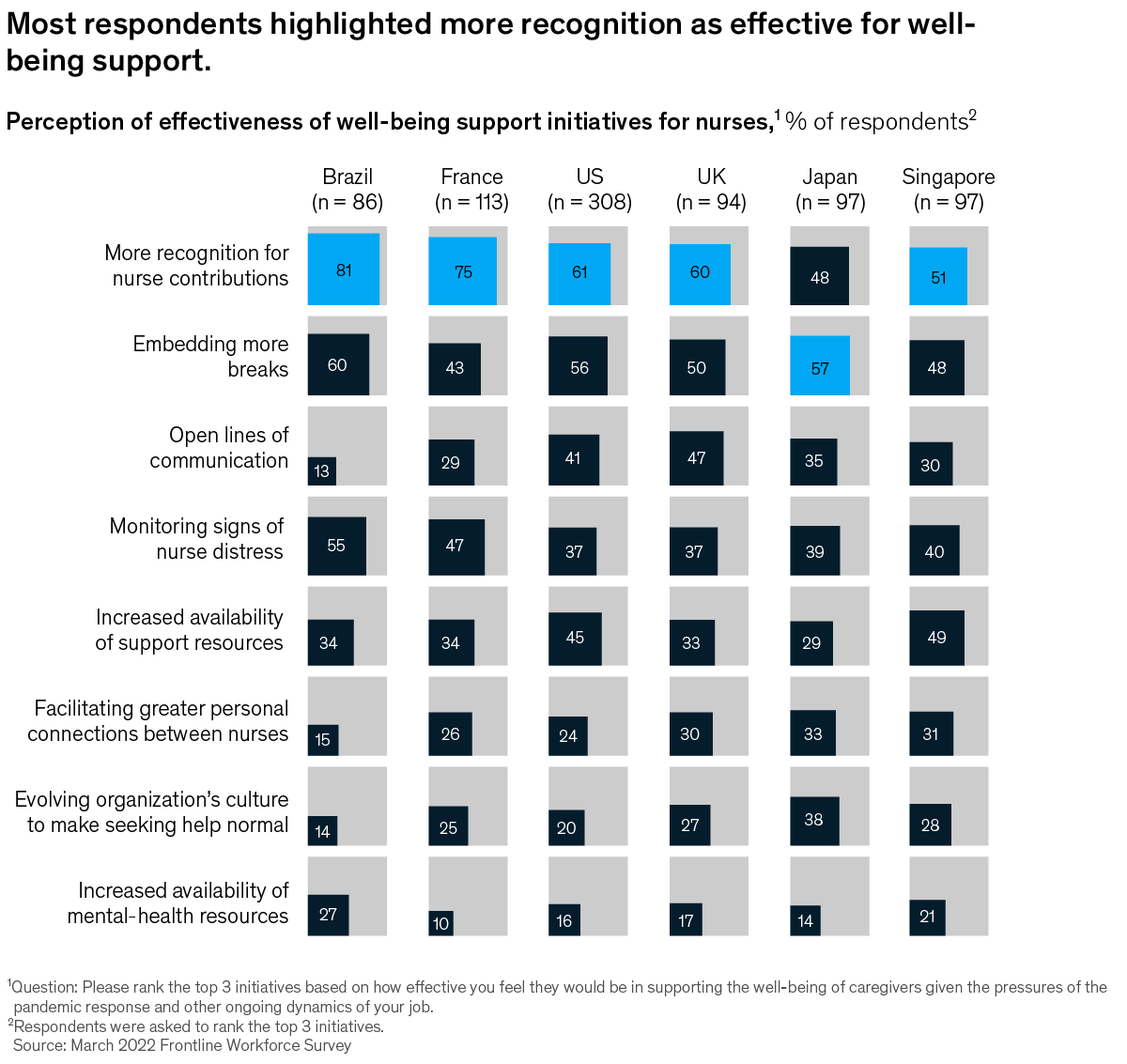
See today’s chart 
Also New 

Advanced tech elevates process modeling in batch-processing industries In high-volume batch-processing industries, reliable models of manufacturing processes can help companies cut production costs while improving quality and performance. Be efficient 


Author Talks: George Floyd’s America revisited Toluse Olorunnipa and Robert Samuels examine the life of the man whose death launched a worldwide movement: “We all have a responsibility to pay attention to people like George Floyd before they die under the knee of a police officer on video.” Don’t forget 


Growth opportunities for digital health in KSA and UAE Digital health can improve patient services and well-being in the Kingdom of Saudi Arabia and the United Arab Emirates. The sector offers growth opportunities for existing players and new market entrants. Seize the opportunity 


Follow our thinking 



Share these insights Did you enjoy this newsletter? Forward it to colleagues and friends so they can subscribe too.
Was this issue forwarded to you? Sign up for it and sample our 40+ other free email subscriptions here.This email contains information about McKinsey’s research, insights, services, or events. By opening our emails or clicking on links, you agree to our use of cookies and web tracking technology. For more information on how we use and protect your information, please review our privacy policy. You received this email because you subscribed to the Daily Read newsletter. Manage subscriptions | Unsubscribe Copyright © 2022 | McKinsey & Company, 3 World Trade Center, 175 Greenwich Street, New York, NY 10007
by "McKinsey Daily Read" <publishing@email.mckinsey.com> - 06:37 - 22 Jun 2022 -
A new view of human capital
Re:think
The key CEO mindsets Human capital is the knowledge, attributes, skills, experience, and health of the workforce, and it accounts for roughly two-thirds of an individual’s total wealth. Right now, people are fundamentally reconsidering what they want to do with their human capital—reassessing how they want to engage with work, who they want to work for, what kind of work they want to do, and on what terms they want to do it. So this is a critical moment for companies to reconsider the way they think about their employees’ human capital.
Typically, companies think about how to deploy human capital to create value for the company. But human capital is really possessed by workers, who are making decisions all the time to augment and enhance their human capital. Being at a company is just part of that journey. So companies that want to retain employees and make the most of their human capital would be wise to focus on human capital from the perspective of the individual. Thinking about how to enrich that individual’s journey can be a more promising frame of reference than thinking about, “How can I profit from these people?”
Our research shows that about half of what people earn during their lifetime is associated with the skills they gain through work. That’s a huge number. A lot of previous research has focused on the value of education, qualifications, and credentials as you enter the workplace. Those are important, but the decisions you make regarding the roles, the jobs, and the skills that you acquire through your work life will drive your earnings. That’s even more true for people who don’t enter the workforce with top credentials. For example, for tile setters or counter workers in the US, the value of the skills they develop at work is more like 65% to 75% of lifetime earnings.
If companies think about themselves as part of that human capital accumulation journey, they’ll change the kind of investments they make in and the opportunities they create for people. There are three key mind shifts to consider.75%
of the lifetime earnings of some workers lacking top entry-level credentials can be attributed to the skills they acquire on the job
The first shift is for companies to start assessing people based on their potential, not just based on success in their current role. We already know that workers are capable of great learning. New roles in the US typically involve 30% new skills, and workers who are upwardly mobile, who improve their compensation and earnings faster, typically take on roles that demand an average of 40% new skills. But companies often don’t act as if this is the case. Too often, they search for the perfect fit. That’s too bad: you’re not looking for a clone, you’re looking for somebody who has what it takes. Smart companies are already making big investments to assess people for their potential. Some tools are structured to evaluate, say, whether employees have a certain set of necessary tech skills. Others might look at patterns of behavior to assess whether the person is entrepreneurial and capable of stretching beyond their current role.
The second shift is for companies to embrace the idea of mobility. Companies should get on the better side of the change dynamic we’re seeing during the Great Resignation.
We see three ways companies can do this. First, embrace internal mobility. Some companies build the equivalent of a digital talent marketplace, a place where you can see how the skills that you have fit into different career pathways. Some even overlay this with career advisory support to help counsel workers wanting to find good paths to follow.
Second, be open to different kinds of mobility paths. Companies often think about mobility as very linear and vertical. But companies that focus on lateral movement create more opportunities for workers trying to build their human capital. Employees want the flexibility to decide, “Here’s an opportunity for me to learn something, even if it’s not a promotion that involves higher pay.”
Third, companies can embrace people who leave their job just as much as they embrace people who join the team. People who leave a company see a future. They’re investing in becoming great professionals. They could be good business partners, or even potentially a source of talent going forward. The more you celebrate such people the more you position yourself as an employer who helps make employees successful. Such companies become talent magnets.
The third mind shift is to double down on smart learning and training for workers. A lot of companies complain that they don’t see productivity gains commensurate with the amount they spend on training. We think companies need to focus more on learning that’s experience-based, anchored in people’s jobs. Structured training is very important when people need to pick up specific technical skills. But so much of what makes an employee successful is more likely to arise out of mentorship and apprenticeship. Apprenticeship is where employees really learn the soft skills that allow them to use their hard skills in work environments that are, let’s face it, fuzzy and unpredictable. And that, after all, is what we all really value in the human worker, as opposed to a machine.ABOUT THE AUTHOR
Anu Madgavkar is a partner in McKinsey’s New Jersey office.
MORE FROM THIS AUTHOR

The rise and rise of the global balance sheet: How productively are we using our wealth?
Net worth has tripled since 2000, but the increase mainly reflects valuation gains in real assets, especially real estate, rather than investment in productive assets that drive our economies.

Financial data unbound: The value of open data for individuals and institutions
Economies that embrace data sharing for finance could see GDP gains of between 1 and 5 percent by 2030, with benefits flowing to consumers and financial institutions.
IN TWO WEEKSSteve Van Kuiken on four tech trends that matter
As innovation moves to the edge of your company, the role of IT shifts dramatically—as does the CEO’s role in managing technology and innovation.
This email contains information about McKinsey’s research, insights, services, or events. By opening our emails or clicking on links, you agree to our use of cookies and web tracking technology. For more information on how we use and protect your information, please review our privacy policy.
You received this email because you subscribed to our McKinsey Quarterly alert list.
Copyright © 2022 | McKinsey & Company, 3 World Trade Center, 175 Greenwich Street, New York, NY 10007
This email contains information about McKinsey’s research, insights, services, or events. By opening our emails or clicking on links, you agree to our use of cookies and web tracking technology. For more information on how we use and protect your information, please review our privacy policy. You received this email because you subscribed to our Sustainability alert list. Manage subscriptions | Unsubscribe Copyright © 2022 | McKinsey & Company, 3 World Trade Center, 175 Greenwich Street, New York, NY 10007
by "McKinsey Quarterly" <publishing@email.mckinsey.com> - 03:37 - 22 Jun 2022 -
Return to the office? Companies need to give workers a real reason why.
McKinsey&Company
Build it right; they will come .

The next-level office In the news • The great divide. After months of start-and-stop mandates to return to the office, some companies are finding that it doesn’t matter what they order their employees to do: many people will keep working from home, regardless of the rules. That’s inspired some organizations to go “remote first,” seeing it as a way to attract the best talent and keep employees happy. Other companies now consider an office buzzing with action to be such a rarity that it sets them apart and attracts gung ho workers. [NYT] • Hating the schlep. The office itself is not the problem: it’s getting to it. Eight of the ten major US cities with the steepest drops in office occupancy had one-way commutes that averaged more than 30 minutes before the COVID-19 pandemic. Economists and psychologists have long known that commuting is a major source of unhappiness; now that people have a way to avoid that misery, they’re holding onto it fiercely. Anticommuting sentiment is global, some observers say, with the emptiest offices being seen in commuter cities that force workers into traffic jams or crowded public transit. [WSJ] 
Strategically located workplaces that are built for purpose and integrated into corporate strategies, cultures, and operating models are more important than ever. 
On McKinsey.com • Raison d’être. Company leaders have traditionally viewed workplaces as cost centers, but this mindset is out of date. The new world of flexible work requires that companies consider workplaces as sources of competitive advantage. The key is to drill down on corporate strategy and determine how real estate can help further corporate goals. Instead of shunting office space decisions off to a siloed real-estate team, CEOs and executive teams should take over and drive the process. • Cutting-edge workplaces. McKinsey highlights three companies that are successfully marrying real estate to strategy. One of them, a biopharma giant, swam against the remote-work tide and doubled down on its headquarters. Top scientists were attracted to the company for the opportunity to work in cutting-edge labs, all wired with the latest collaboration technology. Read the full article for guidance on creating a workplace that provides a competitive edge, illustrated with photographs of state-of-the-art offices. — Edited by Katy McLaughlin Rethink real estate 
Was this forwarded to you? Sign up here. Or send us feedback — we’d love to hear from you. 

Follow our thinking 


This email contains information about McKinsey’s research, insights, services, or events. By opening our emails or clicking on links, you agree to our use of cookies and web tracking technology. For more information on how we use and protect your information, please review our privacy policy. You received this email because you subscribed to the On Point newsletter. Manage subscriptions | Unsubscribe Copyright © 2022 | McKinsey & Company, 3 World Trade Center, 175 Greenwich Street, New York, NY 10007
by "McKinsey On Point" <publishing@email.mckinsey.com> - 12:17 - 22 Jun 2022 -
The metaverse could generate up to $5 trillion in value by 2030
the Daily read
Enter the metaverse .
Share this email 



AN ARTICLE A DAY, PICKED BY OUR EDITORS 
While the world is still figuring out the metaverse and its role in our daily lives, one thing is certain: its potential is too big to ignore. Indeed, a new report on value creation in the metaverse finds it could generate up to $5 trillion in impact by 2030. But how do you navigate a space that’s still taking shape? Explore the research and download the full report, which draws on a survey of more than 3,400 consumers and executives, plus expert interviews and analysis. Prepare for what’s next with insight on the metaverse’s history and characteristics, investment flows, evolving consumer and business behavior—and what leaders should do to realize its value. Don’t miss this vital look at the real business of the virtual world. — Joyce Yoo, digital editor, New York 
Value creation in the metaverse With its potential to generate up to $5 trillion in value by 2030, the metaverse is too big for companies to ignore. Enter the metaverse 

Quote of the Day “I hope that by outlining the people who were impacted by George Floyd’s death, we can also learn more about his life and learn more about how he struggled under the knee of the societal systems that we’ve created.” —Toluse Olorunnipa, a political enterprise and investigations reporter on systemic racial inequality in America, in a recent Author Talks interview 
Chart of the Day 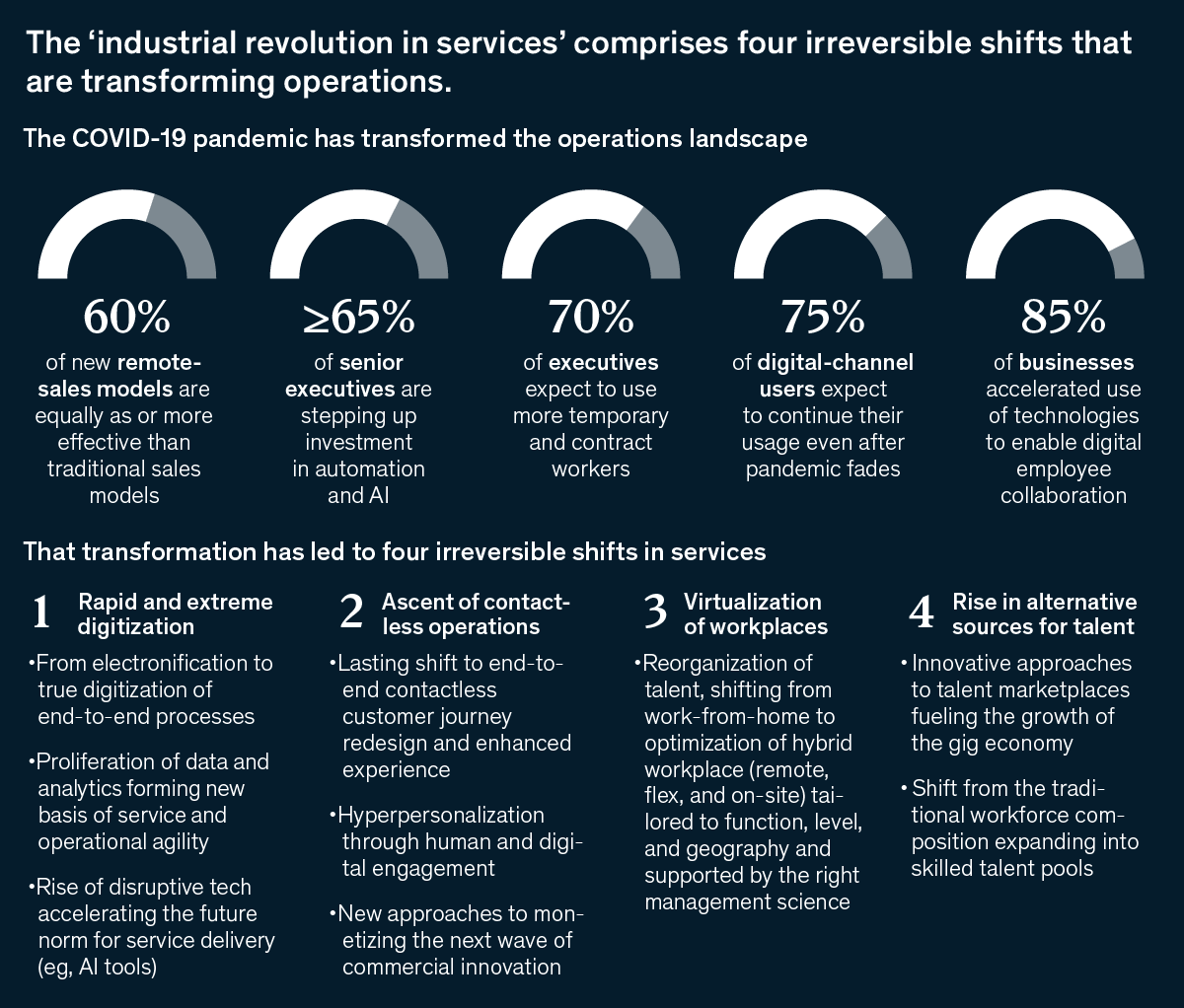
See today’s chart 
Also New 

As more Americans ask for public aid, could integrated benefits help? Public-health and human-services programs help more than 100 million Americans. States that better integrate these programs could increase access, improve outcomes, and reduce costs. Combine and condense 


Three new mandates for capturing a digital transformation’s full value Most organizations achieve less than one-third of the impact they expected from recent digital investments. What can companies learn from the best performers about how to beat the odds today? Think differently 


Accelerating toward net zero: The green business building opportunity Surging demand for zero-carbon technologies, materials, and services gives companies opportunities to build new green businesses. Leaders that move quickly could see exponential growth. Forge ahead 


Follow our thinking 



Share these insights Did you enjoy this newsletter? Forward it to colleagues and friends so they can subscribe too.
Was this issue forwarded to you? Sign up for it and sample our 40+ other free email subscriptions here.This email contains information about McKinsey’s research, insights, services, or events. By opening our emails or clicking on links, you agree to our use of cookies and web tracking technology. For more information on how we use and protect your information, please review our privacy policy. You received this email because you subscribed to the Daily Read newsletter. Manage subscriptions | Unsubscribe Copyright © 2022 | McKinsey & Company, 3 World Trade Center, 175 Greenwich Street, New York, NY 10007
by "McKinsey Daily Read" <publishing@email.mckinsey.com> - 06:41 - 21 Jun 2022 -
[TOMORROW] Unblock integration challenges
Tray Email
5 lucky attendees will receive $50 Amazon gift cards*!Hi Md,
Are integration challenges blocking your business goals? How do you plan to address them? Join Tray.io and Nucleus Research Analyst, Alexander Wurm as we discuss how to build an integration strategy that really works. You'll:
- Learn the integration usability and functionality factors that drive success
- Get five practical strategies to speed integration development by 30-50%
- See a live demonstration of integration in action
Plus, 5 lucky attendees will receive a $50 Amazon gift card* on Tray.
* Only applicable to the US and Canada
 Kayla Gibbons
Kayla Gibbons
MARKETING
© Tray.io Inc. 25 Stillman Street, San Francisco, CA 94107, United States
by "Kayla Gibbons, Tray.io" <kayla@tray.io> - 03:45 - 21 Jun 2022 -
The beauty industry could be more inclusive. How much might that be worth?
McKinsey&Company
Making over the beauty industry .

The business of Black beauty In the news • Natural beauty. In film and television, Black characters are letting down their hair in curls, cornrows, puffs, and twists, flaunting the natural texture that was once frowned upon in Hollywood. Afro-textured hair has long played a central role in Black American identity, but it hasn’t always been celebrated by mainstream America. To combat negative stereotypes, Black people have often had to make others “more comfortable with their very presence” by emulating Eurocentric beauty ideals, as two university professors put it. [NYT] • Caring for textured hair. A big opportunity exists for hair care brands that can meet Black customers’ needs: Black consumers spent roughly $910 billion in 2019. But too often, they have to cope with inadequate beauty products or discrimination in stores. In skin care and makeup, innovative companies have found success by making inclusive products. But there’s a lack of hair care offerings that serve people with textured hair, says one well-known stylist who debuted her own hair care line in May 2022. [Vogue Business] 
Research suggests that 75% of Black beauty consumers can be persuaded to buy beauty products by ads that feature various skin tones across all races. 
On McKinsey.com • Out of stock. Black Americans spent $6.6 billion on beauty products in 2021. Yet Black consumers often have trying experiences within the beauty industry, despite being highly discerning. Nearly three-quarters of Black consumers said that Black beauty products were frequently out of stock where they shopped, a McKinsey survey revealed. At the same time, Black consumers were 44% more likely than their White peers to believe that quality trumped cost and 38% more likely to prefer brands that reflected their personal style. • Building Black brands. A majority of Black consumers said that they prefer to buy brands owned or founded by Black people, according to McKinsey research. But such businesses often face substantial barriers, including a lack of funding and representation, on their way to developing products and winning over consumers. By addressing racial inequity, the US beauty industry could add an additional $2.6 billion in revenue by 2025, the analysis finds. Explore how the beauty industry can better support Black brands and consumers. — Edited by Belinda Yu Serve Black consumers 
Was this forwarded to you? Sign up here. Or send us feedback — we’d love to hear from you. 

Follow our thinking 


This email contains information about McKinsey’s research, insights, services, or events. By opening our emails or clicking on links, you agree to our use of cookies and web tracking technology. For more information on how we use and protect your information, please review our privacy policy. You received this email because you subscribed to the On Point newsletter. Manage subscriptions | Unsubscribe Copyright © 2022 | McKinsey & Company, 3 World Trade Center, 175 Greenwich Street, New York, NY 10007
by "McKinsey On Point" <publishing@email.mckinsey.com> - 10:15 - 20 Jun 2022 -
Sumo Logic DevSecOps live demo series
Sumo Logic
Cloud Monitoring, Log Management, SIEM, and Software Optimisation for Enterprise
 You need a single-source, cloud-native solution for all your DevSecOps needs. Well, we’ve got good news: Sumo Logic can do that. We cordially invite you to our Live Demo Series where you can see how Sumo Logic optimises all your cloud environments for security, monitoring, analytics, software development and more.
You need a single-source, cloud-native solution for all your DevSecOps needs. Well, we’ve got good news: Sumo Logic can do that. We cordially invite you to our Live Demo Series where you can see how Sumo Logic optimises all your cloud environments for security, monitoring, analytics, software development and more.Cloud Security Monitoring and Analytics, June 21st at 12pm AEDT Learn how to: - Analyse risk through through context awareness of firewall, CDN, and database data
- Enforce security configurations and monitor for any drifts across your cloud environments
- Detect anomalies with machine learning on the cloud
- Identify threats in real time
- Respond to security incidents quickly
Register Cloud SIEM, June 22nd at 12pm AEDT Learn how to: - Automate alert triage and turn security alerts into actionable insights
- Use correlation-based threat detection
- Enable network, user, and entity context for threat investigations
- Navigate a highly-tuned security interface built by analysts FOR analysts
Register Application Observability, June 28th at 12pm AEDT Learn how to: - Leverage out of the box tools to manage your microservices stack
- Use transaction tracing to diagnose issues in distributed microservices code
- Surface insights to determining proper provisioning levels
- Unlock advanced analytics to troubleshoot modern applications quickly
Register Software Development Optimization, June 29th at 12pm AEDT Learn how to: - Automate setup via Terraform for out of the box integrations across multiple software development tools (like Jira, GitHub, Jenkins, Bitbucket, PagerDuty, and OpsGenie)
- Benchmark performance against industry-leading DevOps and Research Assessment (DORA) metrics
- Use real-time insights to drive continuous optimisation of software development and delivery across the entire CI/CD pipeline
Register We look forward to you joining us for live demos with product experts. Feel free to let us know if you have any questions ahead of time.
Sumo Logic
I'm not interested in this series.
Sumo Logic, Level 9, 64 York Street, Sydney, NSW 2000
© 2022 Sumo Logic, All rights reserved.Unsubscribe 


by "Sumo Logic" <marketing-info@sumologic.com> - 05:33 - 20 Jun 2022









